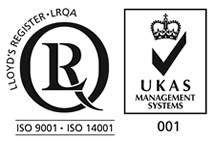
Main Products
Copyright 1998-2025 Firmetal Group All Rights Reserved. | Sitemap
The main processing methods of tantalum foil are: Chemical etching method: By processing tantalum foil with acid or alkali etching agents, high-precision shapes and surface qualities can be achieved. This method is suitable for making small-sized and high-precision devices, but it will leave chemical residues on the surface.
Electrochemical processing method: By electrolyzing in an electrolyte, the surface of tantalum foil is ionized and dissolved on the anode to achieve the processing purpose. This method can produce large-area, high-precision and residue-free tantalum foil materials.
Laser cutting method: By using a high-power laser beam to process tantalum foil, high-precision and high-quality processing results can be achieved. However, this method has a relatively slow processing speed and is suitable for small-batch production.
Electron beam cutting method: By using high-energy electron beams to cut tantalum foil, high-precision and high-speed processing effects can be achieved. However, this method requires the use of high-energy electron beam equipment, which is relatively costly.
Rolling processing method: Placing tantalum foil between two rollers for rolling can make the tantalum foil material more resilient. However, this method needs to take into account the brittleness of tantalum foil, and the pressure and temperature of calendering need to be strictly controlled.
The uses of tantalum foil: Semiconductor devices: Tantalum foil can be used to manufacture metal electrodes and metal wires in semiconductor devices, as well as masks during the manufacturing process.
Aerospace industry: Tantalum foil can be used to manufacture components such as combustion chambers, conduits, throats and nozzles in aero engines, as well as combustion chambers and nozzles in rocket engines.
Medical devices: As tantalum foil does not cause allergic reactions in the body, it can be used to manufacture medical devices, such as artificial joints and plant cultivation.
In other fields, tantalum foil can also be used to manufacture vacuum tubes, capacitors, resistors, thermistors, conductive adhesives, etc.